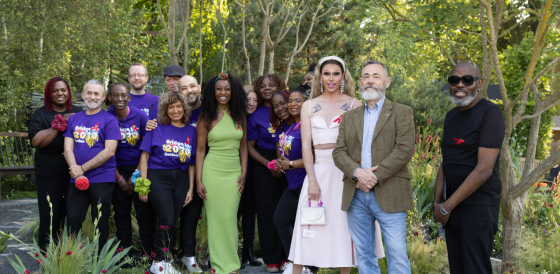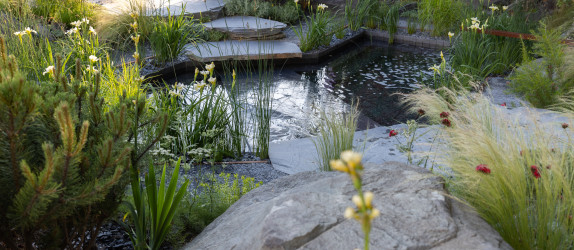

Our RHS Chelsea Flower Show garden shows the huge progress made in the fight against HIV since the 1980s.

Our RHS Chelsea Flower Show garden shows the huge progress made in the fight against HIV since the 1980s.
The Terrence Higgins Trust Bridge to 2030 Garden was one of the highlights of the world-famous RHS Chelsea Flower Show. Created by award-winning garden designer Matthew Childs, the garden was designed to mark the huge progress made in the fight against HIV since the 1980s.
‘We're thrilled to have the opportunity to tell everyone how much HIV has changed in the last 40 years through our Terrence Higgins Trust Bridge to 2030 Garden at Chelsea,' says our Chief Executive Richard Angell.
'We're on a mission to end new HIV cases in this country by the end of the decade and we need to engage as many people in that life-changing goal as possible. The garden of Matt's design will take everyone who visits on a journey from the death and fear of the 1980s through to today where you can live a long, healthy life without HIV holding you back.'
The entrance into the garden was reminiscent of the flooded base of a rejuvenated quarry landscape. The water level rises and falls, revealing a monolith slate stepping stone creating a bridge to the 2030 vision of no new HIV cases. The tombstone, which once represented death and fear, is now a crossing, leading to a secluded terrace in which to enjoy a positive, hopeful future together.
The front of the garden is a crevice garden, which takes inspiration from natural areas where plants grow in gaps between rocks. This ornamental space transitions to a more natural look towards the rear of the garden.
Granite boulders are scattered through the garden, inspired by those found in the slate landscapes of North Wales. One of these boulders balances precariously from the raised bed on the boundary, looking as though it is about to fall. Beneath it, fragile sticks give the illusion they are supporting the weight of the boulder – an analogy for those people lost to HIV.
The planting in the garden is inspired by the re-colonisation of plants in the redundant slate mines of North Wales, by both nature, and from the subtle intervention of ecologists and horticulturalists.
News: Bridge to 2030 Garden is coming to Chelsea
RHS Chelsea Flower Show: About our garden
Join with us and become part of an ambitious club to end new cases of HIV by 2030. The 2030 Club is a place for those who want to end new HIV transmissions in the UK and are dedicated to making it happen.
Feeling inspired by our garden? Kickstart your fundraising and flex your horticultural skillset with our jam-packed garden fundraising guide. Whether you’re cooking up a home-grown dinner party or hosting a big botanical raffle, there are so many different ways you can raise money. Check out our guide below.
Our garden at the Chelsea Flower Show 2024 would not have been possible without the generous support of Project Giving Back, who covered the costs of producing and showcasing this garden.
With special thanks to our garden designer, Matthew Childs Design, garden builder, Yoreland Design, and our lead plant supplier, Hortus Loci.
Support Terrence Higgins Trust by purchasing these beautiful Festival of Flowers Earrings, from Tatty Devine’s newest collection. For every pair sold between 26 April – 30 June, we will receive a donation of £5. Buy here.
Support Terrence Higgins Trust by purchasing a beautiful flower bouquet from Next. Throughout June, 10% of all proceeds from the bouquets will be donated to our life-changing work.
